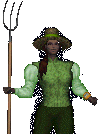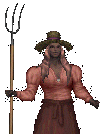
Calah Greenleaf Sonoma Shard |

|
|

|

Mekela Grandier Catskills Shard |

Calah Greenleaf Sonoma Shard |

|
|

|

Mekela Grandier Catskills Shard |
The plant system was written on a linear scale.
Each Plant has a number 1-17, as there are only 17 plants in the current system.
We start the scale with the three seed types that were introduced on boglings:
Campion, Tribarrel Cactus, and Fern.
Campion is # 1 on this scale and Tribarrel Cactus is #17.
(this has been confirmed by Auger who designed the system)
The crossing result of Campion and Tribarrel Cactus
ALWAYS
equals a Fern.
Thus
the Fern is in the center of the linear chart #9
.
From this we build our linear chart as we cross to get different plants.
This chart will be added to in the future. It is known there is a whole 16
plants, 5th generation, already being
coded. So the chart will change but the basics to the linear system will
remain the same.
There is an equation that can help figure out what your outcome will be.
The equation is: parent +parent /2 =child. (A+B)/2=C
So (campion) 1 + (Fern) 9 = 10 / 2 = 5 (Lillies)
Whole numbers have exact results.
The linear formula works on only intergers (whole numbers).
There are some instances where crossing two types of plants will give you a decimal.
The system does not read the decimal.
So the way to figure out what child you will get in these instances, is to apply another formula first.
The first thing checked is if A and B are side by side on the scale.
we do this with the formula:
B=A+1 or B=A-1
If one of the statements is true, then you get the 50/50 chance for either parent.
example: parent A: 14 (snake) and parent B: 15 (pear cactus)
29/2 is not a whole number.
15= 14+1 or 15=14-1 since the first statement is true, we stop there.
This means we will get a 50/50 chance at either parent as the resulting child.
Now, If neither of the above statements are true, as in the next example,
then you use (A+B)/2 and round down (or drop the decimal).
Parent A: ponytail palm and Parent B: pear cactus
10 (ponytail palm) + 15 (pear cactus)
15=10-1 or 15=10+1
Neither statement is true.
so, we would then put it in the formula (a+b)/2=child
(10+15)/2= 25/2 = 12.5
We would then just round down (or drop the decimal).
The resulting child would be 12 Century.
*Thanks to Devil_Woman for help with the math and Lyra for finding Auger's statements and making me check my results :)*
1
 Campion |
2
 Poppies |
3
Snowdrops |
4
 Bulrush |
5
 Lillies |
6
 Pampas grass |
7
 Rushes |
8
 Elephant Ear |
9
 Fern |
10
 Ponytail Palm |
11
 Small Palm |
12
 Century |
13
 Water Plant |
14
 Snake Plant |
15
Prickly Pear Cactus |
16
Barrel Cactus |
17
 Tribarrel Cactus |
| Parents |
 Campion |
 Fern |
 Tribarrel Cactus |
 Lillies |
 Water Plant |
Snowdrops |
 Rushes |
 Small Palm |
Pricky Pear Cactus |
 Poppies |
 Bulrush |
 Pampas Grass |
 Elephant Ear |
 Ponytail Palm |
 Century |
 Snake
Snake
|
Barrel Cactus |
 Campion |

|

|

|
|

|

|

|

|

|
||||||||
 Fern |

|

|

|

|

|

|

|

|

|
||||||||
 Tribarrel Cactus |

|

|

|

|
|

|

|

|
|
||||||||
 Lillies |
|

|

|

|

|

|

|

|

|
||||||||
 Water Plant |

|

|
|

|

|

|

|

|

|
||||||||
|
Snowdrops |

|

|

|

|

|
|

|

|

|
||||||||
 Rushes |

|

|

|

|

|

|

|

|

|
||||||||
 Small Palm |

|

|

|

|

|

|

|

|

|
||||||||
|
Prickly Pear Cactus |

|

|
|

|

|

|

|

|
|
1. click on the flower symbol on the main menu of the plant you want to collect pollen from.
2. click the pollen button on the bottom.
3. target the plant you want the pollen to go to and click.
Note down the two parents, so you can remember what the child will be from the resulting cross.
Seeds from cross pollinated plants will not be tagged with a name only a color.
Only those that are self pollinated will have a name and color attached.

This site was Built by Wynterhart - all rights reserved. Saved here for posterity.